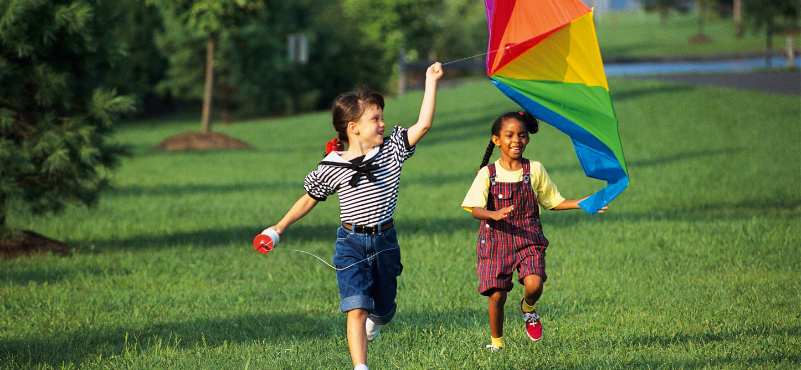As a divorce mediator, your goal is to help your clients come to an agreement and stay focused on what’s important.
For divorcing couples with children, we often talk about putting the kids first and avoiding negative behaviors like talking badly about the other parent.
But how many divorce mediators actually teach their clients how to focus on the children? We offer advice about not putting kids in the middle, we tell parents not to move into new relationships too quickly, and we repeat ad nauseum, “put the kids first.” But we don’t give them the skills to talk to the children about divorce and prevent ongoing divorce-related mental health and behavioral issues — often because we are not therapists and don’t have those individual resources to provide.
Creating a Foundation for a Positive CoParenting Future
As mediators, we can help parents create a foundation for positive relationships and coparenting communication post-divorce by providing parents with the skills and tools they need to help their children cope with divorce. A visual coparenting calendar for kids can be introduced by the mediator and used by divorcing parents to show their kids what to expect from divorce and relieve anxiety the kids may or may not be expressing.
According to family therapist Dr. Lisa Herrick, 75% of divorcing parents spend less than 10 minutes talking to their children about divorce. This is one of the biggest changes in a child’s life, and the conversation not only needs to be longer than 10 minutes, it needs to be ongoing.
“Kids are resilient,” is the refrain we hear over and over – but that’s true only to a degree. The truth is that even toddlers struggle with divorce, and they may not exhibit the behavioral issues that indicate they’re struggling until they are school age. If the kids had received help earlier, they would not have spent years suffering.
Frederick Douglass said, “It is easier to build strong children than to repair broken men.” No parent wants to raise a broken child, but most do not have the skills to prevent it, or the understanding that those skills are necessary. Further, they are suffering themselves and often lack the emotional bandwidth to figure it out for themselves. Unless the children are truly falling apart, the parents may not realize that the kids are suffering.
The Mediator’s Unique Position
Divorce mediators are on the front lines of divorce and are often the first professional to talk with the family about the impact of divorce on kids. They are in a unique position to advocate on behalf of the kids, explain to their clients how to truly put the children first, and share the risks of failing to do so.
Creating a child-centered divorce is less about the initial conversation parents have with their kids about divorce, and more about the ongoing lifestyle that the parents create for their kids. By providing your clients with the resources to create a stable foundation for their kids, you empower them to have a successful long-term coparenting relationship and continue to keep their focus where it matters: on the kids. This sets the stage for positive coparenting communication and provides a common language that coparents can reference again and again.
Provide your divorcing clients with a children’s picture book and coparenting calendar kit to help them talk to their kids about divorce and create a healthy foundation. Parents should use the picture book to explain what divorce is and how it will affect the child’s day-to-day. They should also address the common concerns kids have about divorce, which are also covered in the children’s book: that the divorce is not the child’s fault, that they’ll always be loved, and that they will continue to see each parent.
Picture books are visual resources that make it easier for kids to truly learn. They are meant to be referenced again and again, driving the lessons about divorce home. They are not meant to be read once, but rather over and over.
When the parents have read the book to their children, they can then use the visual coparenting planner to discuss their individual custody schedule with the children, and show them how the visitation schedule will play out in their own family. Using the coparenting calendar, they should use the reusable stickers for each parent to show the kids what their actual schedule will look like. Each week, they should revisit the planner and plan out the week ahead, encouraging the kids to share their worries and concerns.

Creating Structure in Mediation and Starting With an Easy Win
As a divorce mediator, you can use this coparenting kit to create structure, starting off with a positive, easy win. The coparenting calendar is a tangible tool that is in line with what the divorcing parents are trying to achieve — which is to focus on the kids during divorce. By beginning mediation with this tool for their children, you can set the stage for more difficult discussions — such as division of property and assets — to be more productive.
Divorce is an extremely difficult time for everyone involved. The family is fractured and broken, and the mediator is in a position of navigating treacherous waters to reach a resolution. Creating a positive, caring experience for your clients during mediation means connecting with them in a real and genuine way about their goals and what matters most to them: their kids.
By using a kids coparenting calendar in your practice, you bring the entire family into the experience of healing together — which is a truly meaningful gift.

As a writer, illustrator, and speaker, Sara Olsher spends her life creating book and visual calendar kits for kids at Mighty + Bright and talking about things that make many people want to crawl into a deep, dark hole. Whether it’s divorce, cancer, death, or uncertainty, she’s worked hard to be comfortable with the profoundly uncomfortable. Her work has been featured in POPSUGAR, Romper, Reader’s Digest, the Mighty, and Good Housekeeping, to name a few, and she’s spoken in front of audiences large and small about how to handle major life changes like divorce and cancer. She truly believes that every one of us has the strength and resilience to overcome unimaginable hardship, and use our lessons to make this world a much better place. She is the author of six children’s books about divorce and cancer, and other changes.

Get Your FREE Divorce Survive & Thrive Kit!
Includes a financial blueprint for divorce, a co-parenting guide, and the BEST strategies to help you stay positive and take care of yourself during divorce and beyond.
[mailerlite_form form_id=2]


Revolutionizing the conversation around Divorce, one internal narrative at a time.
MENU
FOLLOW GABRIELLE
DISCLAIMER: The commentary, advice, and opinions from Gabrielle Hartley are for informational purposes only and not for the purpose of providing legal advice or mental health services. You should contact an attorney and/or mental health professional in your state to obtain advice with respect to any particular issue or problem.
CONTACT GABRIELLE
NORTHAMPTON ADDRESS: 76 Masonic Street, Northampton, MA 01060
NYC ADDRESS: 150 East 52nd Street, Suite 1002, New York NY 10022
STATEN ISLAND ADDRESS: One Edgewater Plaza Suite 304, Staten Island, NY 10305
PHONE: 413.341.0034/ 917.757.0980

